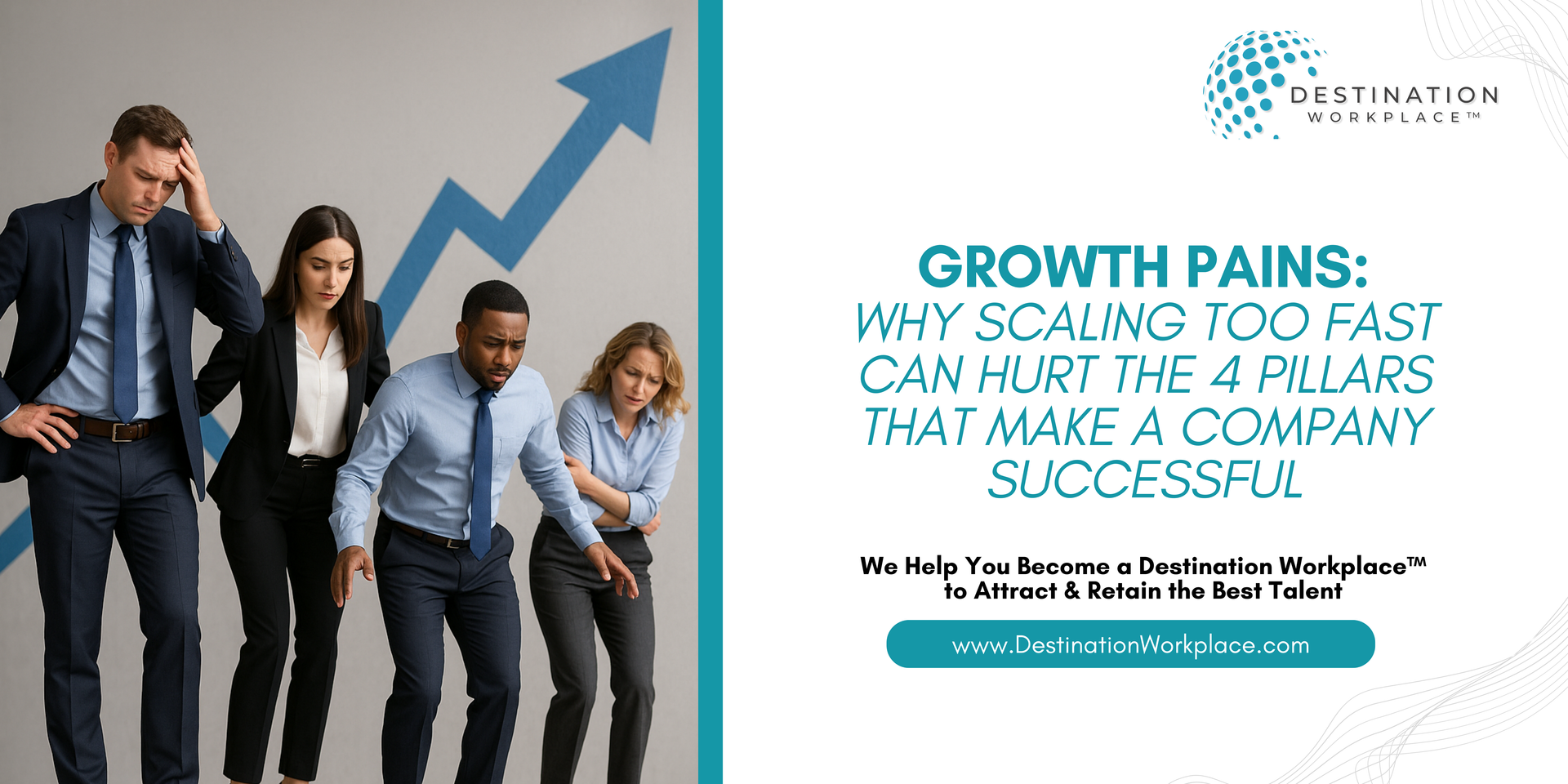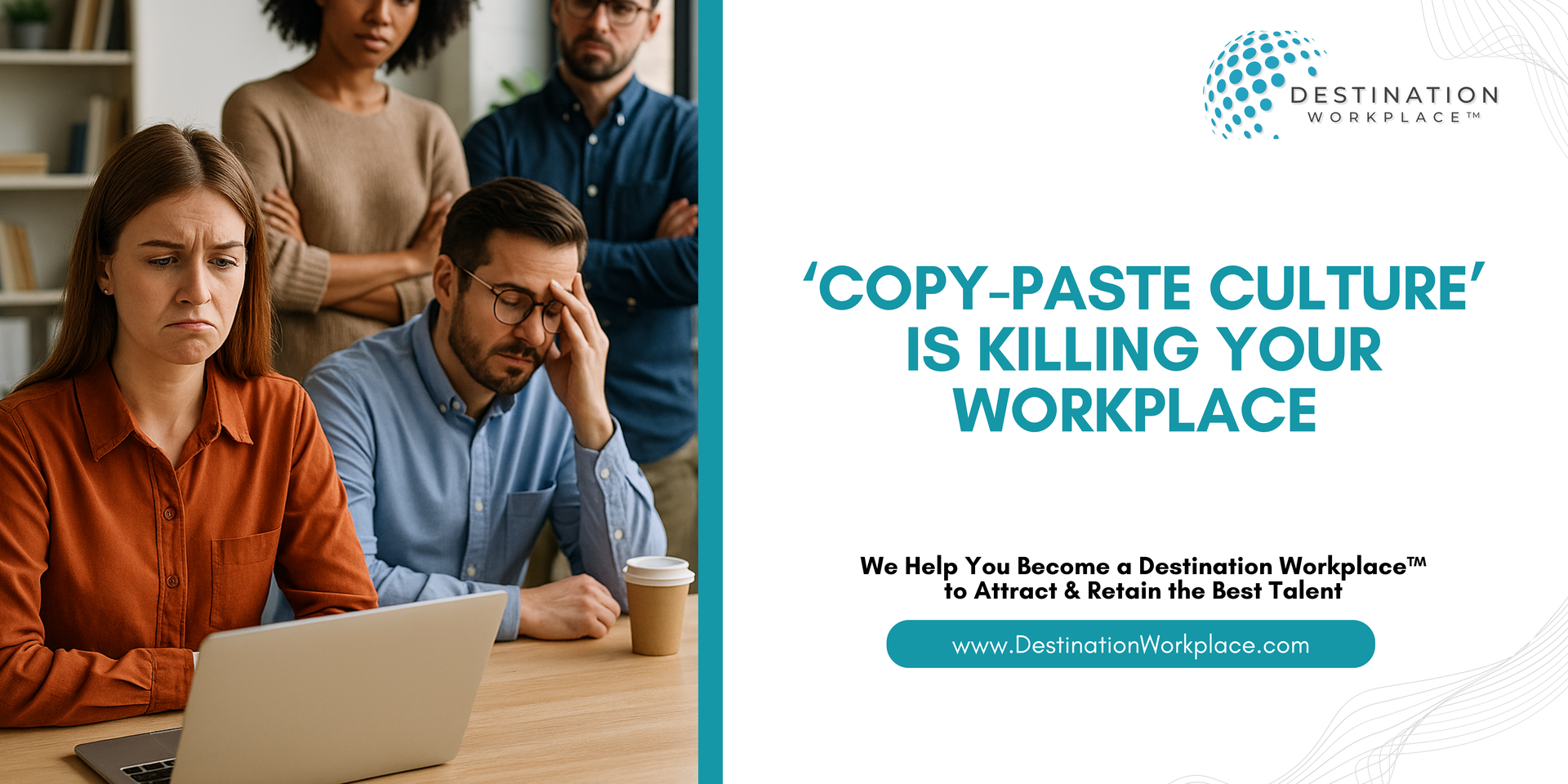Growth Pains: Why Scaling Too Fast Can Hurt The 4 Pillars That Make a Company Successful

I’ve been having the same conversation with business owners across the board lately, from tech startups to family-owned franchises, and here’s what they’re saying:
“We’re growing so fast that it’s actually hurting our business.”
It’s that bittersweet moment where growth feels like a win, but behind the scenes, things are breaking. It’s what I call the blessing and the curse of fast scaling.
On paper, you’re doing everything right. But in reality, growing too fast, without the right foundation, can quietly wreck the four pillars that hold your company together:
Productivity, People, Profits, and Purpose.
Let’s break down what fast growth really does to each of these, and learn how to scale without losing the soul (or sanity) of your business.
1. Productivity
Here’s what happens when you grow too fast: more clients roll in, you hire fast, expand into new markets, but your internal systems are still built for a smaller operation. Suddenly, things slow down. Processes get clogged, communication stalls, and people spend more time fixing problems than producing results.
The numbers back this up. In Q2 2025, U.S. labor productivity increased by just
1.5%, leaving almost no buffer for operational inefficiencies. When your structure can’t keep up with your scale, output drops, costs go up, and your margins quietly erode. Growth should make you sharper, not more scattered.
Actionable strategies:
Build the “scale readiness” checklist: process maturity, role clarity, and communication flows, before adding major growth.
Run a stress test of your operations: pick one growth vector (new product, market, hire) and simulate worst‑case process failure.
Insert buffer zones: e.g., hold growth of new hires to 10 % until you confirm existing team metrics are stable.
2. People
Your team doesn’t just power your business; they are your business. But when you’re scaling too fast, they’re often the first to feel the pressure. Roles get fuzzy. Onboarding gets rushed. Leadership can’t give the support people need. That’s when disengagement and burnout start to spread.
According to the 2025 National Workplace Trends Study, 57% of employees say they’ll consider leaving if they don’t trust leadership. You can’t afford to lose your A-players just because the pace outran your people strategy.
Actionable strategies:
Create a scale‑leadership sprint:
train emerging leaders now, not later, so they are ready to step in as you grow.
Map “people capacity” not just headcount: before hiring, ask “can my culture, onboarding, communication scale at this rate?”
Build a look‑back rhythm: after each growth wave, check team sentiment, turnover risk, and role clarity; treat this as a dashboard metric.
3. Profits
Growth should boost the bottom line, right? Not always. When you grow too fast without tightening your operations, you start bleeding cash in hidden places: rework, turnover, missed deadlines, and client churn.
One stat that’s often overlooked:
replacing an employee can cost up to 33% of their annual salary. Multiply that across multiple exits during a messy scale-up and you’ve got a profit problem, not a people problem. Without margin discipline, rapid growth can quietly become your most expensive strategy.
Actionable strategies:
Calculate the “cost of ready vs cost of rushing.” The incremental cost of adding a poorly onboarded hire, a misaligned process step, or a service mistake.
Set profit checkpoints tied to scale phases: e.g., no new major growth until % gross margin is stable, customer satisfaction holds, and churn is under control.
Use leading indicators: defect rate, rework hours, onboarding cost, and first‑90‑day retention. These signal profit leakage before it shows up in P&L.
4. Purpose
When you’re moving at full throttle, it’s easy to lose sight of why you started in the first place. You’re hiring, launching, expanding, but if your purpose doesn’t scale with your business, it starts to feel like a grind instead of a mission.
The 2025 National Workplace Trends Study found that 83% of employees say it’s vital to feel connected to their company’s mission. If people don’t know what they’re building or why it matters, growth becomes just another transaction, not a movement. Purpose is what turns your momentum into meaning.
Actionable strategies:
At every growth stage, reaffirm your mission: integrate purpose into onboarding, role descriptions, and communication from leadership.
Audit before scaling: ask “Does this growth move us toward our mission or dilute it?” “Is our workplace culture getting stronger or weaker due to this growth spurt?”
Develop “micro‑purpose rituals”: small, repeatable actions that keep the mission, vision, and values alive (e.g., team share‑backs, client‑impact storytelling, purpose-aligned metrics).
Listen, growth is a good thing. But growth without intention is simply expansion with a side of chaos.
So here’s your challenge this week:
Pick one of the 4 P’s: Productivity, People, Profits, or Purpose, and ask yourself: “If we doubled our size tomorrow, what would break first?” Then map one bold step to fix it before you hit that growth curve.
Want help building a business that scales and sustains? Visit DestinationWorkplace.com, or book me to speak at your next leadership conference by visiting BetsyAllenManning.com.
About Betsy:
Featured on
FOX, CBS, NBC, and ABC, Betsy Allen‑Manning is a leadership keynote speaker and high‑performance expert who works with executives, managers, and teams to ignite commitment, elevate excellence & infuse purpose into their workplace culture.
Her C.O.M.M.I.T. Framework™ and ‘DNA for Success’ keynote series deliver data‑backed, high‑energy presentations that strengthen leadership, enhance team performance, and build resilient cultures where people thrive and stay. Betsy is also the founder of Destination Workplace™, an award‑winning leadership training company in Dallas, recognized for advancing leadership excellence and driving a culture of high performance in some of the world’s most respected organizations.











